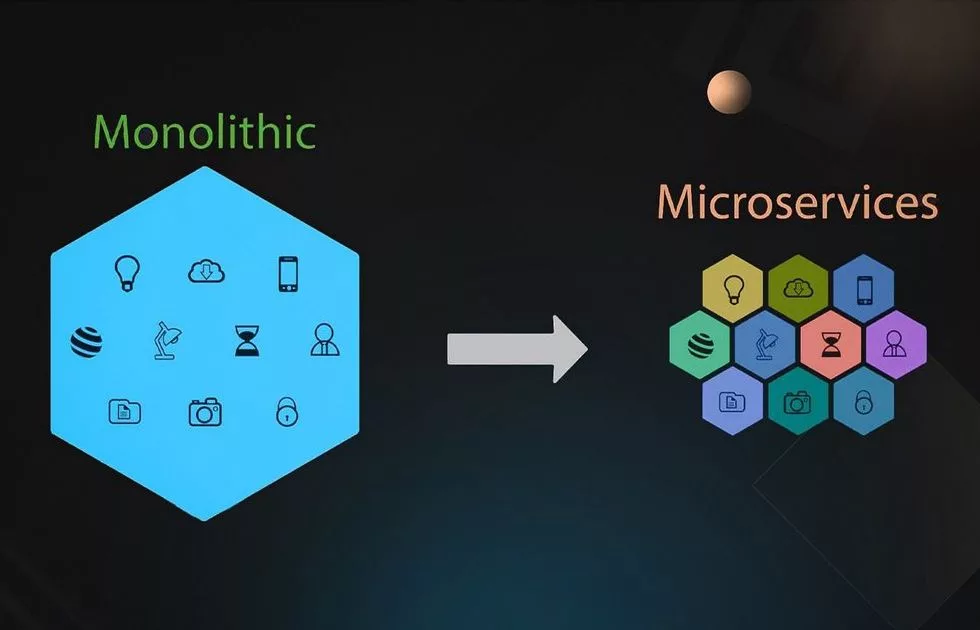Due to the growing demands for enhanced flexibility, scalability, and speed from development teams, traditional monolithic software development methods have largely become outdated. To cater to the requirements of the contemporary landscape, two alternatives have arisen for efficiently constructing and managing complex, large-scale applications: service-oriented architecture (SOA) and microservices.
Determining the most suitable model for your business is a crucial decision. Although these two approaches might initially seem quite similar, there are significant distinctions that can assist your development team in deciding which model is the most fitting for your specific business needs. In this article, we delve into both SOA and microservices, highlighting their key variances and presenting some high-level application scenarios for each.
What is SOA?
Service-oriented architecture (SOA) is a cloud-centric software development approach that decomposes essential application elements into separate service modules. These modules are smaller in scale and possess greater flexibility compared to monolithic applications, making them more manageable and adaptable.

SOA – Service Oriented Architecture
SOA Services
SOA includes four primary service categories:
- Functional services, often called business services, which revolve around business applications and operations.
- Enterprise services, employed to execute various functionalities.
- Application services, focusing on the creation and deployment of specific applications.
- Infrastructure services, associated with backend, non-functional procedures like security, access control, and authentication.
SOA Components
Every SOA service comprises three fundamental elements:
- The interface specifies how the service provider handles requests from the consumer.
- The contract establishes the rules governing the interaction between the provider and the service consumer.
- The implementation refers to the actual service code.
Furthermore, to create more intricate services and applications, SOA services can be integrated. Typically, these service modules are interconnected via a robust communication and control layer known as an enterprise service bus (ESB).
SOA Decoupling
The foundation of the SOA framework relies on the principle of “loose coupling.” In this context, it signifies that elements do not need intricate, direct integration, which is commonly seen in monolithic architecture. This enables various components to communicate through the ESB, even if they are constructed on diverse platforms or programmed in different languages. Consequently, the development team can repurpose modules to serve various functions across the organization, reducing the amount of time developers would otherwise spend reconstructing individual components for each web application.
What is a microservice?
Microservices architecture is an evolution of SOA, sharing the concept of breaking down large-scale applications into smaller, more adaptable components. However, it does so with an even finer level of granularity, organizing each unit around a specific, highly specialized business function.

Bounded Context
Microservices adhere to the principle of bounded context, which entails the ability to place a component and its data as a self-contained unit with limited dependencies. In simpler terms, services are decoupled and operate independently. This means that if one web service experiences a failure within an application, other services associated with the application will continue to function as usual.
API
Within a microservices model, services utilize an application programming interface (API) for communication with other services, components, and applications. Through this API, autonomous services can be seamlessly combined to construct a complex application.
Container Orchestration
Given that services are autonomous in a microservices architecture and the model frequently employs containers for operation, the microservices approach generally offers greater scalability, portability, and fault tolerance compared to other software development models, including SOA.
SOA vs Microservices: What’s the difference?
The primary distinction between SOA and microservices pertains to their architectural scope. In an SOA framework, services or modules are designed for enterprise-wide sharing and reusability, whereas in a microservice architecture, the emphasis is on individual services that operate autonomously. In essence, SOA has a broad enterprise scope, while microservices have a more focused application scope.

This differentiation leads to several significant variances between the two models:
Reusability vs Data Duplication
In the context of SOA, developers leverage component reuse to enhance scalability and efficiency. However, applying the same approach in a microservices model typically diminishes agility and fault tolerance due to the creation of inter-service dependencies. Instead, in a microservices architecture, developers choose to reuse code or duplicate data to maintain efficiency and preserve a high degree of independence.
Synchronous Calls vs Asynchronous Communication
Within SOA, services are accessible enterprise-wide through synchronous protocols, often in the form of RESTful APIs. Nevertheless, synchronous calls in a microservices architecture introduce real-time dependencies, reducing reliability and resilience. To mitigate these issues and sustain optimal performance, developers enable asynchronous communication through methods like event sourcing or a publish/subscribe model.
Source Data vs Local Data
SOA promotes the capability for all applications to access and update data at the source level concurrently. While this ensures data synchronization, it also fosters dependencies across services, which isn’t ideal in a microservices framework. To maintain autonomy among all services and applications, the microservices model provides local access to the necessary data for each service, resulting in instances of data duplication and, as a consequence, increased complexity. However, this approach eliminates dependencies that could affect performance.
SOA vs Microservice: Which is suited to your business
SOA and microservices offer unique sets of advantages and drawbacks. The choice of which architectural approach suits your business typically hinges on your specific use case, available resources, IT maturity, and business requirements.
When SOA Is the Right Choice
In case when you have larger and more diverse application ecosystems, SOA often proves advantageous because it facilitates robust integration via the ESB. This empowers developers to establish connections among heterogeneous applications and various messaging protocols while preserving each application’s autonomy.
Nevertheless, it’s worth noting that SOA deployments typically exhibit slower and more intricate characteristics compared to microservices. This is due to the interconnection of multiple services, implying that the introduction of a new service or feature necessitates some degree of redeployment for the entire application.
Particular use cases well-suited for SOA encompass:
- Facilitating communication between multiple autonomous applications.
- Developing a service with the intention of reusing it one or more times across the enterprise.
- Supporting an application that relies on multiple data sources.
- Exposing data or functionality to external clients.
- Constructing serverless functions.
When Microservices is the Right Choice
Building a microservices architecture is typically more straightforward and faster when compared to SOA, primarily because the individual services are smaller, making deployment quicker and more efficient.
For organizations operating in smaller, less intricate environments and not requiring a robust communication framework, the microservices approach often presents advantages in terms of speed, adaptability, resilience, and frequently results in lower costs and reduced complexity.
Microservices are well-suited for the following cases:
- Relatively straightforward projects that can be conveniently broken down into smaller components.
- Complex applications that have either already been divided into smaller parts or have a clear approach to doing so.
- Organizations seeking to adopt agile development and continuous delivery practices.
- Companies looking to optimize their cloud computing resources, particularly through the utilization of containers.
- Applications that incorporate a variety of frameworks, programming languages, and technologies within the same environment.
CMC Global- Your Trusted IT Outsourcing Partner
Here at CMC Global, we recognize the significance of staying up-to-date with the latest industry trends, implementing best practices, and fostering a culture of continual learning. This dedication has enabled us to deliver robust, inventive, and efficient software solutions to our clients.
Whether you’re interested in developing a new software product, enhancing an existing one, or exploring offshore development opportunities, we’re at your service.
Our team of professionals is eager to discuss your project objectives and explore how we can assist you in constructing outstanding software solutions that distinguish themselves in the market.
Don’t hesitate to get in touch – let’s start the journey of creating exceptional software together.





